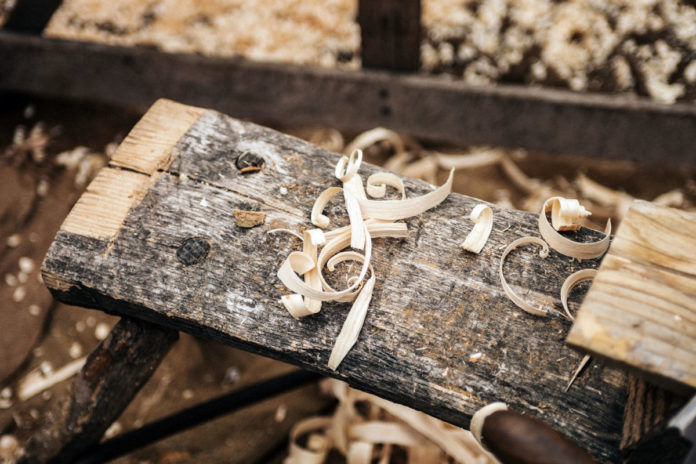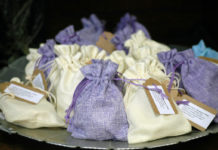If you pull into the parking lot at 1700 3rd Avenue in Mankato, the warehouse you’ll see will not look all that impressive. It’s a big brick building that looks at home near all the other industrial structures in the area. You’d probably assume it’s stuffed full of rusty manufacturing equipment and dingy tools—but you’d be very wrong.
Instead, if you walk inside, you’ll find an artist’s dream. The space is divided into different workshop areas, and each area is chock full of tools and supplies for any craft or creation you want to design. There’s a ceramics area with pottery wheels and drying clay sculptures lining the shelves, while tucked in the back is the metalwork area, which features forges and metal cutting tools. There are also lathes, a 3D printer, glass blowing torches, a loom, rock cutters and laser engravers, among many, many other tools and pieces of equipment. Whether you want to create a piece of delicate jewelry or build a sturdy wooden birdhouse, the tools you need are right here.
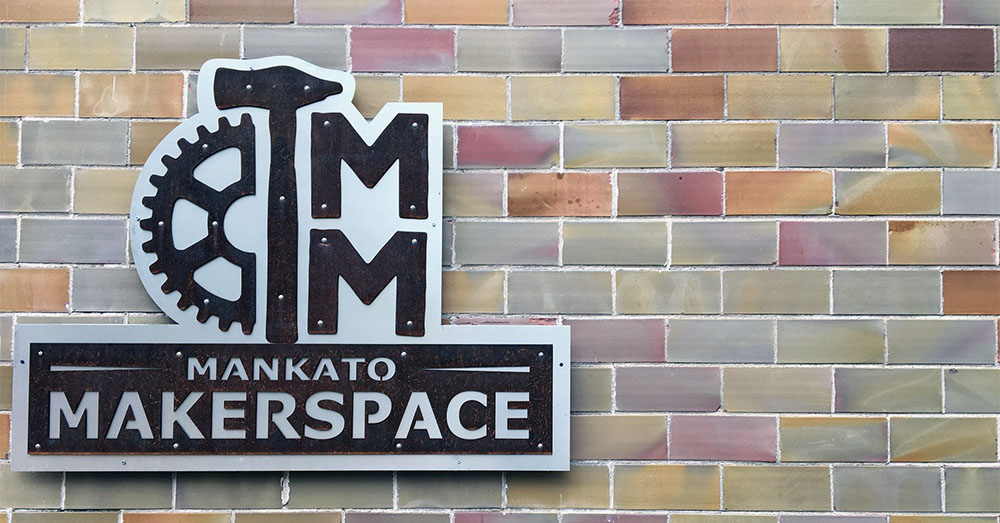
The Mankato Makerspace opened its doors in 2017. According to Makerspace board member Dustin Swiers, the founders just wanted to find a physical location that could house all the tools and equipment necessary for their artistic pursuits, but it quickly grew into something bigger. Now a nonprofit organization, the Makerspace has roughly 45 members and continually hosts classes and workshops to introduce community members to all that the world of art has to offer, whether that’s a shoe making class or a basics-of-painting night.
“The first and really only goal at the beginning was to have a space for artists, makers and craftspeople to rent studio space or have the tools available,” Swiers said. “We hadn’t realized the need that Mankato had for a space like this.”
A Space for Everyone
According to Swiers, it took about three years of planning to make the Makerspace a reality, but the hard work was worth it.
“Originally, it started with a collective of individuals with some rather simple goals, but they were makers, artisans [and] craftspeople who were just tired of working out of their basements or garages and having to uncover and unearth everything to make a simple cut,” he explained. “It was a pretty common issue. There wasn’t a lot of availability for private studio spaces. A group of individuals came together and took about three years of organizing, discussing and meeting together to gather enough steam to purchase a facility.”
The group found a warehouse to lease in the fall of 2017 thanks to Ron Goodrich, owner of Goodrich Construction, who leases them one of his buildings.
The first and really only goal at the beginning was to have a space for artists, makers and craftspeople to rent studio space or have the tools available. We hadn’t realized the need that Mankato had for a space like this.Dustin Swiers
“We had massive support from our landlord, Ron,” Swiers said. “He saw the value in creating our vision and helped us financially get started out. Without him, we wouldn’t have been able to get going on creating a space. It’s good to recognize Ron as much as we can, since he’s still helping us out in lots of different ways.”
Swiers added that it took several months to transform the warehouse into a functional space, since it was a shell of a building without heating or even many electrical outlets. All the rooms were built by the group members, while they also formed an official nonprofit organization—the Mankato Makerspace—and set up a board of about six members.
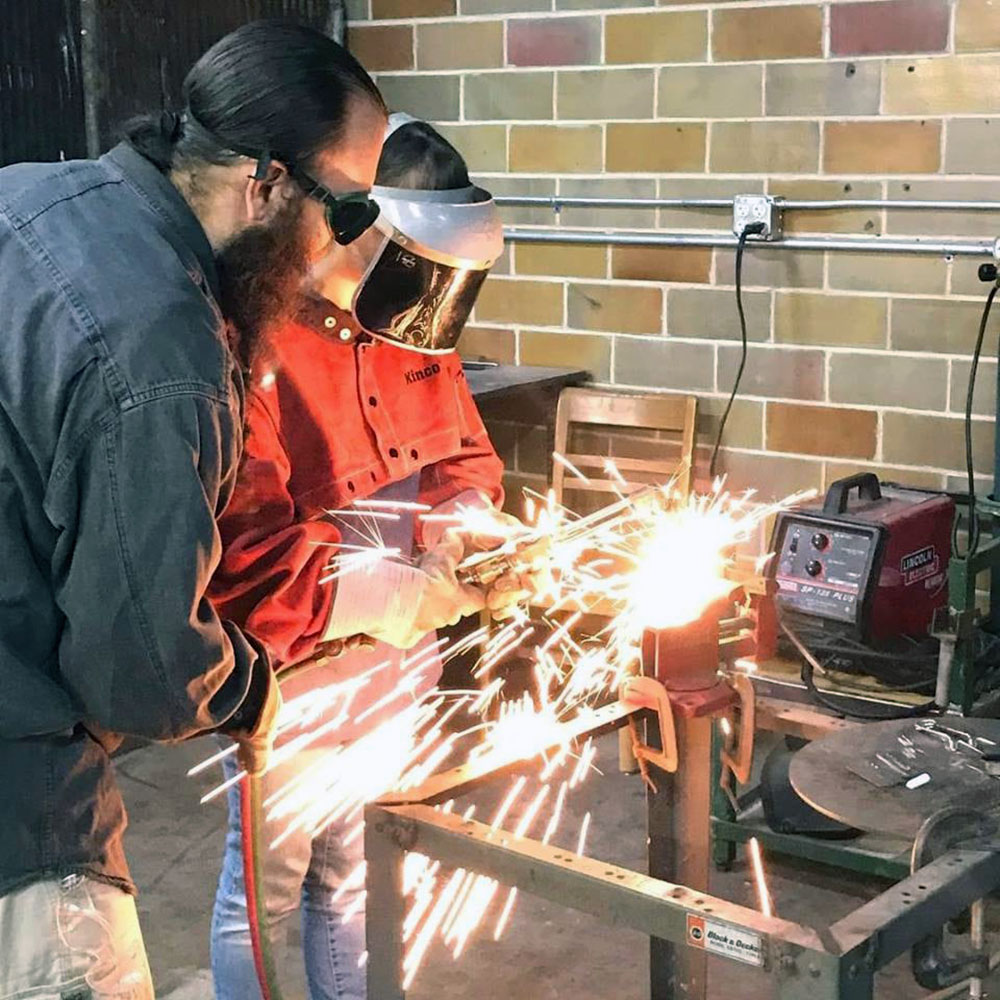
“It was necessary for the organization as a whole to exist, and it became vital for growth and expansion,” Swiers explained. “The Makerspace, after our first year, really took off and expanded beyond what we thought it would be. We had some lofty goals, but it became a reality and a necessity to have those types of systems in place to facilitate and organize this community-based shop.”
Something for Everyone
Swiers said the Makerspace’s model is based on three pillars: tools, know-how and space.
“We facilitate one or all of those things for individuals, case-by-case,” he said. “Some people just want to come in and take a class. [Meanwhile], we have some individuals [who have] got a pretty fleshed-out wood shop but don’t have a planer or a joiner, so they come in and use those certain tools that they don’t have. There are lots of different ways that people use the space.”
The Makerspace is completely volunteer-run and membership driven, and individuals pay a monthly fee to have full access to the space. However, you don’t have to be a member to register for one of the classes or workshops that are constantly being offered; you just need to pay the class fee. Makerspace class instructors range from the organization’s members to visiting artisans.
We had massive support from our landlord, Ron [Goodrich]. He saw the value in creating our vision and helped us financially get started out. Without him, we wouldn’t have been able to get going on creating a space.Dustin Swiers
There are also daily open hours from 10 a.m.-10 p.m., Tuesday-Sunday, when the space is available for anyone to come in and do whatever they want, as long as they’ve been checked off on any necessary safety protocols. “Once you’re checked off, you have free reign,” Swiers said.
The Makerspace has seven different “shops,” each with their own shop lead who oversees the space. The shops include glass and metal (that’s Swiers’ department), ceramics, screen printing, jewelry making, wood shop, the finishing room and the textiles room which is a combination of tech machinery and textile equipment such as the space’s loom. The finishing room in particular is an interesting space because it has a special down-draft ventilation system to facilitate spray painting and other finishing techniques.
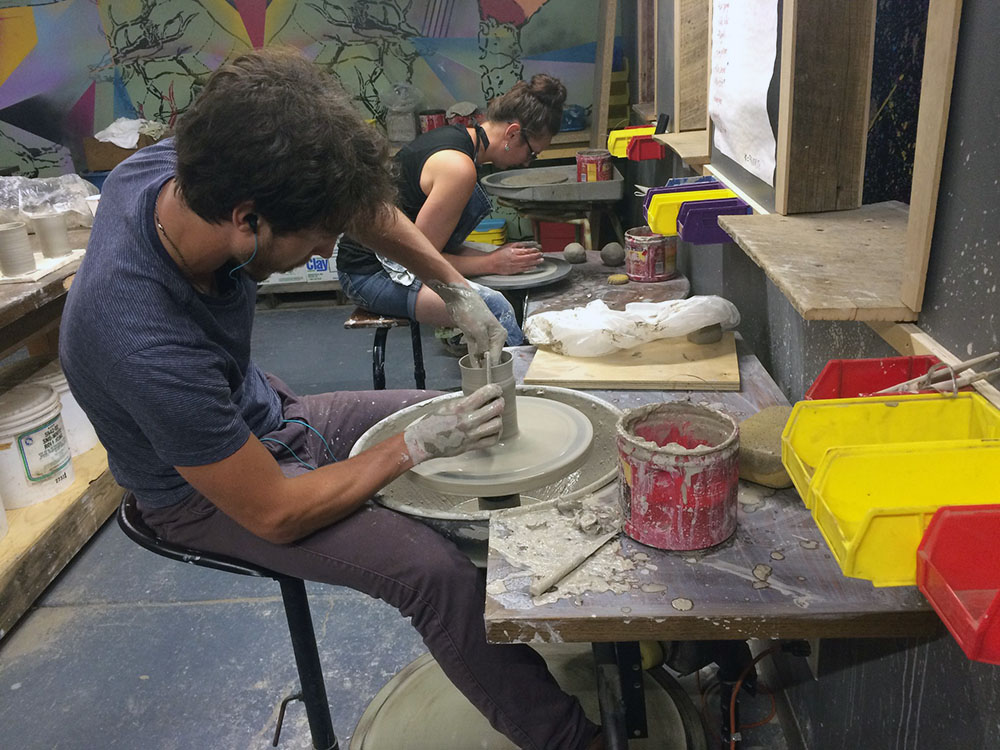
When it comes to tools and equipment, Swiers said about 90 percent of what the Makerspace has to offer has been donated or is on “permanent loan.” Some items belong to members who make them available for others to use. For a few other pieces of equipment, such as the laser engraver cutter and the 3D printer, the Makerspace received grants to purchase.
Swiers said it’s hard to tell which shops are used the most, especially now that members have begun utilizing more tools from different areas for one project.
“People are using all kinds of different things,” he said. “They’re starting to create that interdisciplinary mindset so they know they can pop over [to a different shop]. That’s why I need the Makerspace as a maker—all those different areas really allow you to better your craft without sacrificing so much time or effort to acquire all those types of tools.”
Looking Forward
While the Makerspace’s membership “ebbs and flows,” Swiers said it has steadily increased since the space opened. In addition, members tend to join and then eventually become more involved, such as teaching their own classes.
“The thing that I’m noticing physically is we have some consistency in members, and committed members are kind of evolving into more than that,” he said. “They volunteer a little bit more. They apply themselves in different areas that help the space as a whole. Some of our members are really stepping up and becoming more involved.”
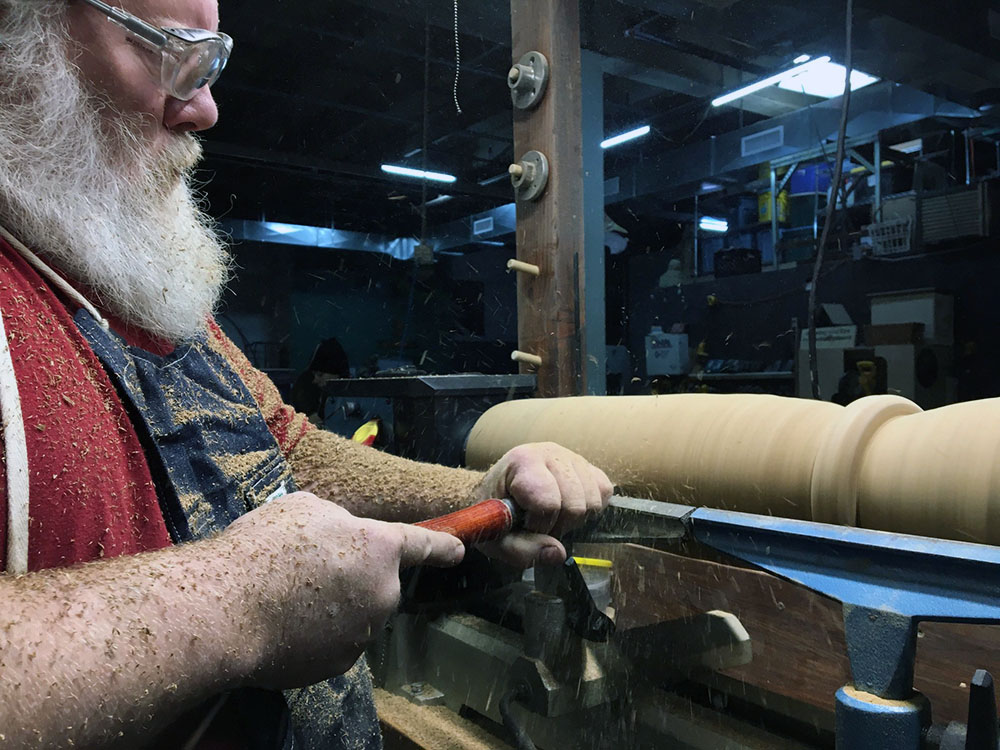
But the consistent hope is to still attract more members, as well as expand the space’s sustainable income. While Makerspace has been able to secure grants and receive donations, Swiers said they’re also hoping to find business sponsorships to enable them to offer even more to members.
“Our goal [this year] was expansion, and we have room to [do that] at our current facility,” he said. “Making that a realistic and sustainable goal is our first step.”
Reaching Out to the Community
Besides workshops and classes, the Makerspace has also partnered with different groups throughout the Mankato community. Members have hosted free classes at the North Mankato Taylor Library, while the space has also hosted workshops for groups such as the Cub Scouts and the Kato Public Charter School.
In addition, the Makerspace also periodically hosts public events such as “Makers Markets,” where craft vendors can come sell their own work in the space. These events are free to members, while others can display their wares for $20. Often, more than 30 vendors will participate.
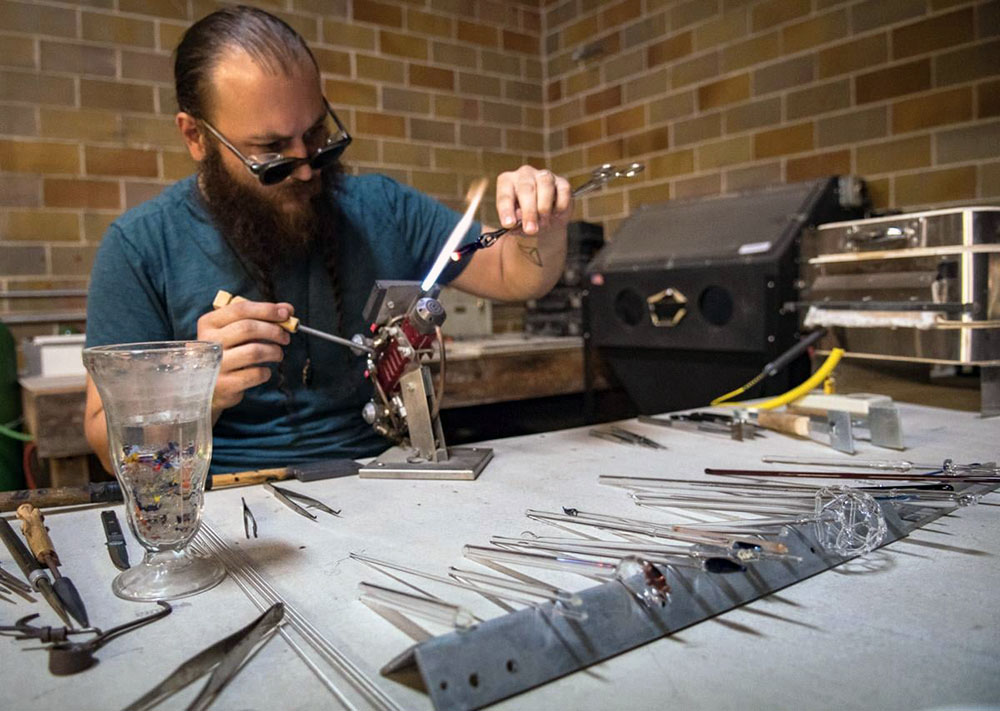
There is also “A Taste of the Makerspace,” which Swiers calls an outreach program to let the Mankato area community learn more about the space. Every so often, the Makerspace will organize one of these evenings, where people can buy a ticket for access to the whole building. There are also live demonstrations and music, along with refreshments.
“Anyone who would like to from the area [can] pay a ticket price at the door, and all the shops are open for quick, 20-minute workshops where they get to try all the different areas,” Swiers said.
Finally, if you’re looking for something even more low-key, you can check out the Makerspace’s monthly open house/jam night. Every second Tuesday of the month from 3-8 p.m., the space is open for community members to tour the shops, listen to the jam session in the back, hang out by the bonfire and eat whatever happens to be on the grill. There are often live demonstrations and free open studios, as well.
The Mankato Makerspace
- Address: 1700 3rd Avenue in Mankato
- Phone number: 507-387-7218
- Email: mnmakersandartists@gmail.com
- Website: www.mankatomakerspace.org
- Facebook page: The Mankato Makerspace
Reopening
As with most Minnesota businesses, the Makerspace closed its doors during Gov. Walz’s stay-at-home order. In late May, the space was partially reopened during half the week for members who were involved in the construction trade or those who were also exempt in the construction support trades.
Starting June 12, the space was able to reopen at 50 percent capacity to all members. Members are highly encouraged to use masks, practice social distancing and sterilize work spaces. Any non-members who are interested in touring the space or visiting members there should schedule their visit ahead of time.

